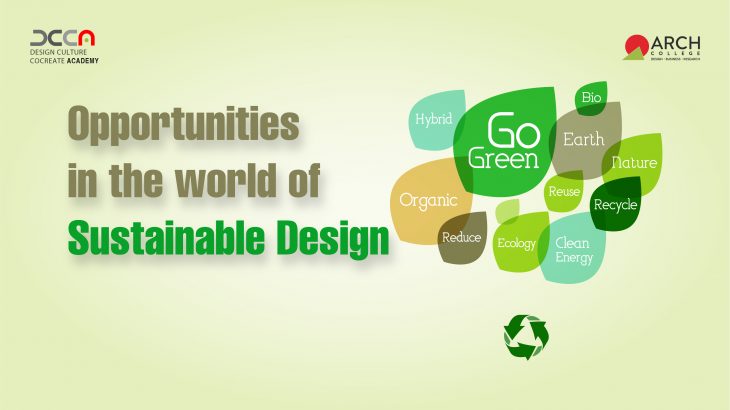Sustainable design is an area of great importance, as we continue to face increasing environmental, social, and economic challenges with regard to materials that we use and the methods that we follow to create products and processes. Fortunately, there are many opportunities for the product and material designers to make a positive impact in this field.

One example of an opportunity in sustainable design is in the field of renewable energy. Solar, wind, and hydro power are all renewable energy sources that can help us reduce our reliance on fossil fuels and mitigate climate change. Sustainability designers can play a crucial role in the development and implementation of these systems, working on everything from the design of solar panels to the construction of solar energy based lights and power systems.
An application in sustainable design can be seen in the field of green buildings. Green buildings are designed to be energy-efficient, environment friendly, and healthy for their occupants. Sustainability designers can work on a range of projects, from designing new green buildings to retrofitting existing buildings with sustainable materials to enhance the sustainability quotient of these conventional buildings.
An example of sustainable design is in Delhi – Indira Paryavaran Bhawan which uses 70% less energy compared to a conventional building. The project adopted green building concepts including conservation and optimization of water by recycling waste water from the site. Indira Paryavaran Bhawan is now India’s highest green rated building. The project has received GRIHA 5 Star and LEED Platinum.
Sustainability designers can also work in the field of sustainable transportation. This can include designing more fuel-efficient vehicles, developing sustainable transportation systems such as bike-sharing programs and public transit, and working on the design of infrastructure such as bike lanes and pedestrian walkways.
Sustainability is combining with other powerful trends like public concerns wrt waste are driving major changes in consumer packaging. Regulators are moving on the issue, and Fast-Moving Consumer Goods (FMCG) companies and retailers are proactively making bold commitments to improve both the sustainability of their packaging and to fundamentally rethink their packaging systems.
In conclusion, sustainable design offers numerous opportunities for designers to make a positive impact on the world. From renewable energy to green buildings, from sustainable transportation to sustainable product design and packaging, there are many areas where sustainability designers are making an impact. By understanding principles of sustainable design and applying the same to various life aspects, designers can help to create a more sustainable world for future generations while pocketing impressive gains through premium pricing of their services and products.
